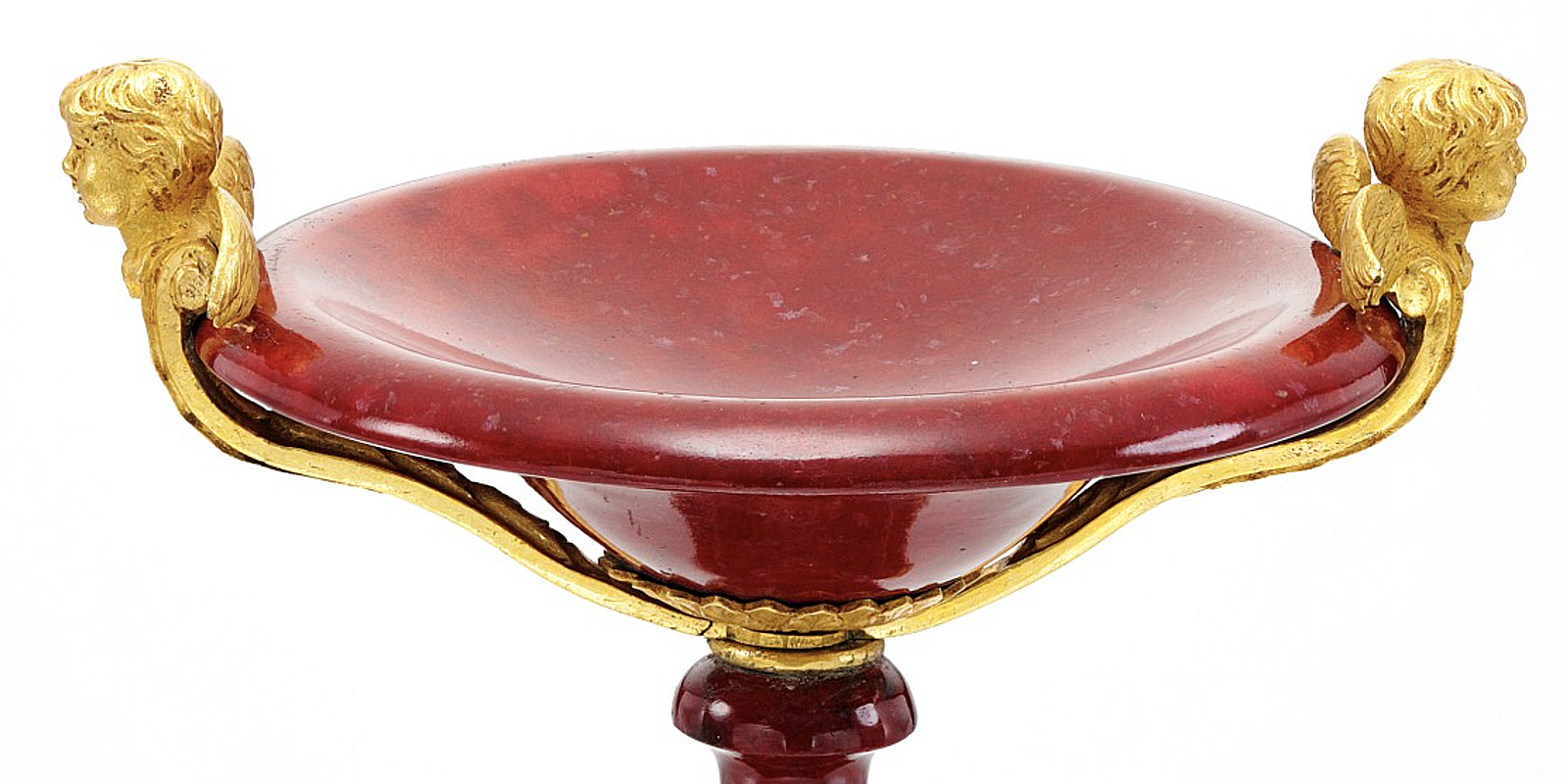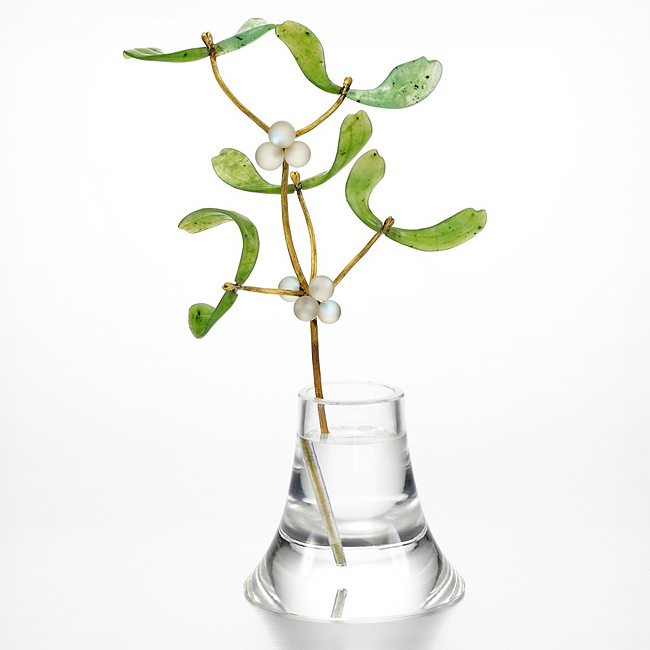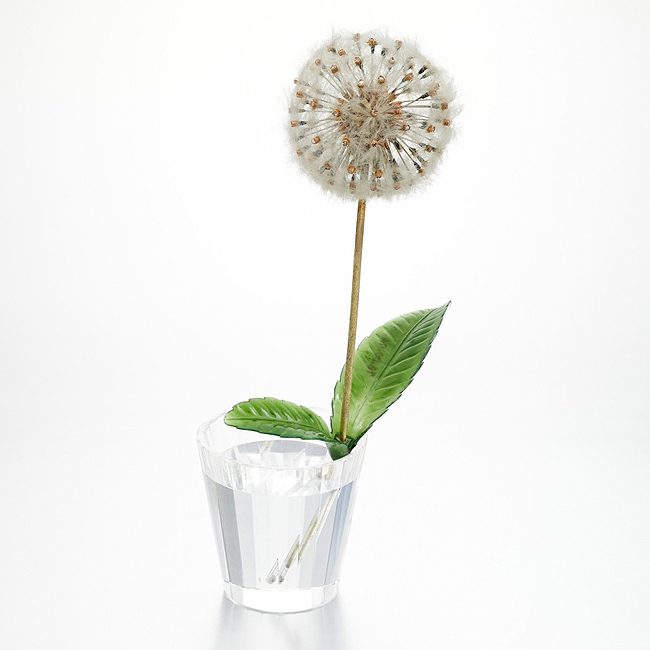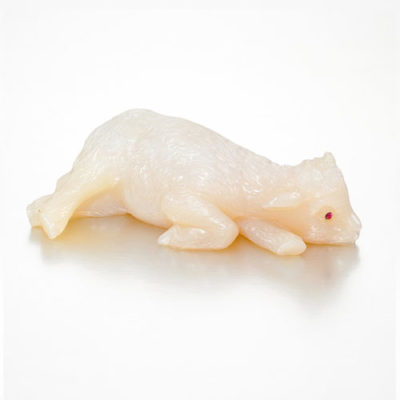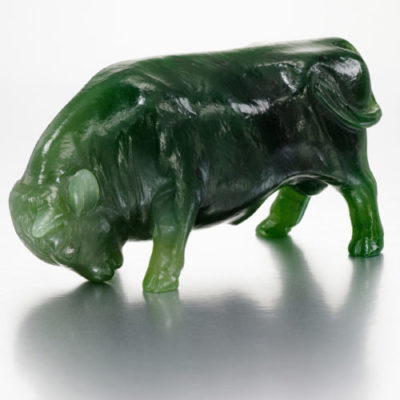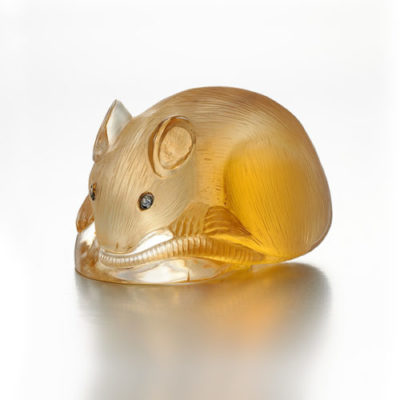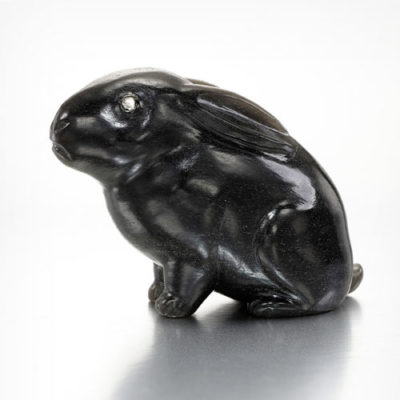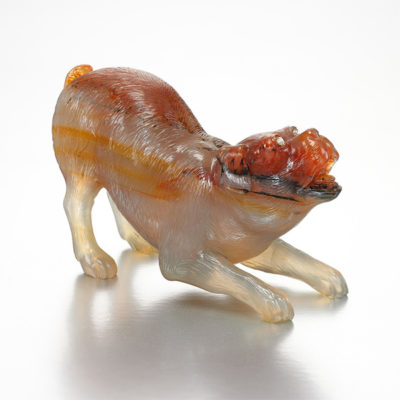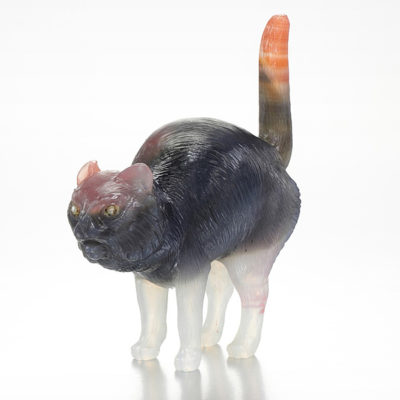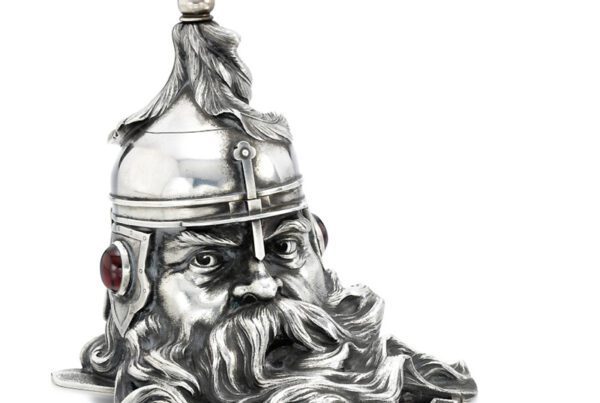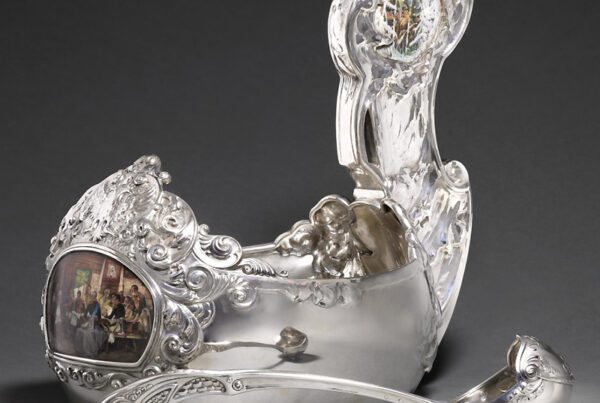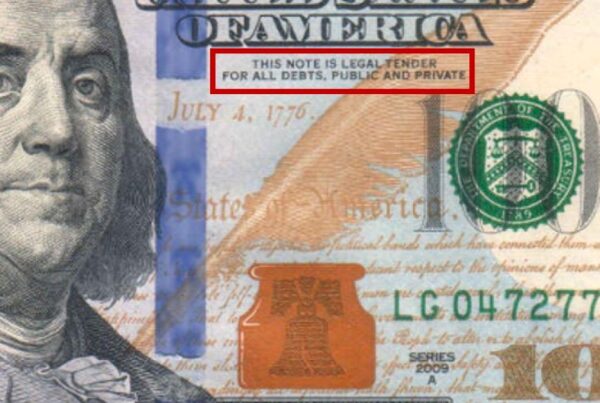On December 2 Sotheby’s are offering 17 items of Fabergé & Vertu from the Brooklyn Museum in New York. Twelve of the lots are by Fabergé, and form a charming, albeit small, collection that appears in very good condition (hopefully the Condition Reports will support that). The ensemble is valued at £1.0-£1.4 million.
The pieces were acquired in the 1950s, mostly from A La Vieille Russie in New York, by Helen Babbott Sanders – who joined the Board of the Brooklyn Museum in 1962 and bequeathed these items to the Museum after her death in 1977; her father Frank was President of the Brooklyn Museum Board in the 1920s. Most of the items were first exhibited at the Fabergé exhibition held at the Smithsonian Institution in 1983, then at a Fabergé show in Munich in 1986.
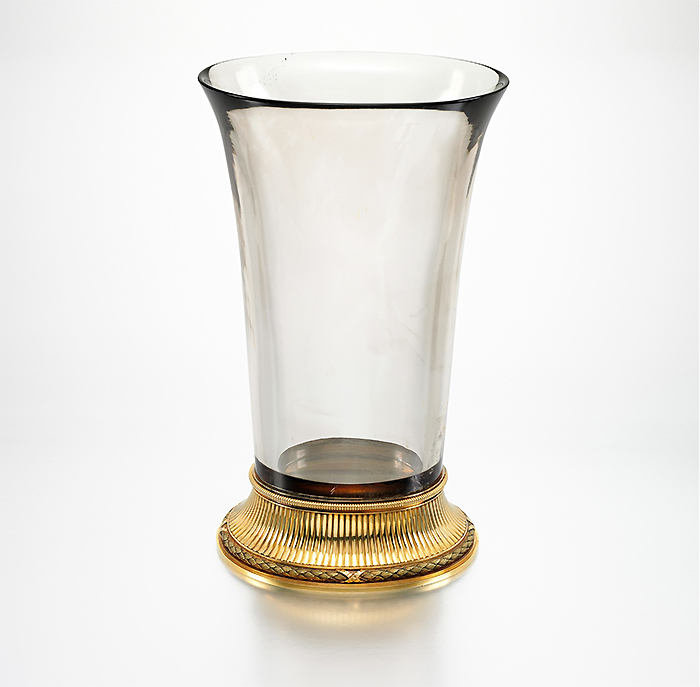
The Imperial ‘Balletta’ Vase
The outstanding item is 9-inch vase carved and crafted from a huge piece of smoky quartz, standing on a fluted, tapering, Louis XVI-style 72-carat gold base marked with the initials of workmaster Michael Perchin (1899-1903). The £250,000-300,000 estimate appears ambitious, if not aggressive – but there again, have we ever seen a Fabergé vase like this one? Probably not.
It’s known as the Balletta Vase and has imperial provenance – being a gift to Eliza Balletta, a ballerina at St Petersburg’s Mikhailovsky Theatre, from her lover Grand Duke Alexei (1850-1908), Nikolai II’s uncle and head of the Russia Navy… until 1905 when, after the disastrous Russo-Japanese War, he fled with Eliza to Paris, where they lived next to the Champs-Elysées. The vase was one of six Fabergé items lent in the name of Madame Balletta to the giant Exhibition of Russian Art held in aid of the Russian Red Cross at 1 Belgrave Square, London, in June/July 1935 (along with a lily of the valley, pearl swan, obsidian dog, owl made from tiger’s eye and a gold and emerald model of Falconet’s famous monument to Peter the Great). There were around 200 Fabergé items in the show – many of them lent by the reigning Queen of England. The 2s 6d admission price, although exorbitant for the time, was doubtless worth every penny.
- Fabergé Gold-Mounted Moonstone, Nephrite And Rock Crystal Study Of Mistletoe
- A Fabergé Jewelled Two-Colour Gold-Mounted Nephrite And Rock Crystal Study Of A Dandelion
Two other beautifully crafted vases, both in rock crystal and dated to around 1900, are also offered at Sotheby’s. They contain plants with gold stems and nephrite leaves and, a few years ago, they would have sold for multiple times their modest estimates: £180,000-250,000 for a sprig of Mistletoe with moonstone berries; £120,000-180,000 for a Dandelion seed-head with pink gold seeds. Both items are unmarked, and were first exhibited in the Fabergé exhibition at A La Vieille Russie in late 1949.
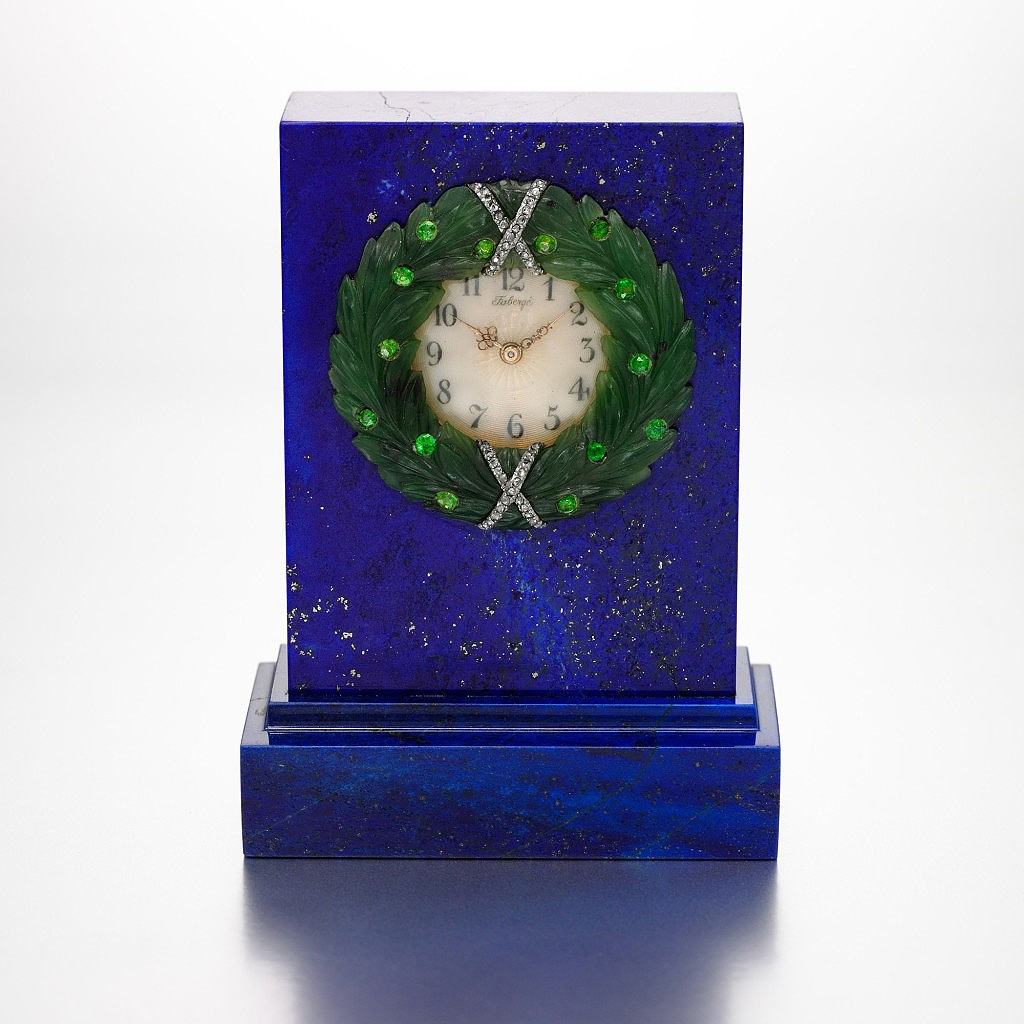
Fabergé Jewelled, Gold-Mounted, Lapis Lazuli, Nephrite and Guilloché Enamel Clock
Then there’s a small, rare and stunning clock, just under 3 inches tall, carved for the U.K. market from a piece of lapis lazuli, with the workmaster initials of Henrik Wigström (c.1900). The opalescent guilloche enamel dial, inscribed in cursive Fabergé, is ringed by a nephrite wreath studded with diamonds and peridots. The clock was purchased in 1915 from the London branch of Fabergé by American heiress Nancy May Leeds (1873-1923), who later married Prince Christopher of Greece (great-grandson of Tsar Nikolai I). I’ll reserve judgment on the £80,000-120,000 estimate until I’ve had the chance to handle it.
At the heart of the Brooklyn ensemble is a series of eight tiny, unmarked animals realistically carved in St Petersburg around 1900. They’re all small – no more than 2¼ inches long – and wonderfully humorous. Most have diamond-set eyes. Estimates range between £40,000 and £70,000.
- Fabergé Jewelled Chalcedony Model of a Billy Goat
- Fabergé Jewelled Nephrite Model of a Bull
Four of these creatures luckily retain their original, fitted, satin and velvet Fabergé holly-wood cases – original boxes are, of course, invaluable for underscoring the credentials of unsigned Fabergé pieces. In contrast to an unusual, docile-looking Goat Kid in milky chalcedony with ruby-set eyes, there’s a spinach-green nephrite Bull which, claim Sotheby’s, is pawing the ground and ready to charge. I hardly agree: he looks to me as if he’s peacefully chomping on a patch of grass and minding his own business.
- Fabergé Jewelled Citrine Model of a Mouse
- Fabergé Jewelled Obsidian Model of a Rabbit
I do, however, support Sotheby’s assessment that two of the animals reflect the influence of Japanese netsuke (which Carl Fabergé enthusiastically collected): a compact obsidian Rabbit with flattened ears; and a tiny, beautifully carved Mouse in citrine quartz, just over one inch long, sniffing something in a natural pose.
- Fabergé Jewelled Agate Model of a Dog
- Fabergé Jewelled Agate Model of a Cat
I love the barking Dog in stripy agate, but my favourite is an angry Cat with its ears pricked and tail upturned in a sign of belligerence, hissing ‘Keep Away!’ This piece is both hilarious and beautifully carved from an extraordinary piece of multi-coloured agate – with white legs, dark grey body, orange-tipped tail and pink ears and forehead.
I’m sad when American museums decide to disperse their collections, even though I understand their need to raise money. It behoves museums to hang on to their holdings, especially if they concern a blue-chip name like Fabergé; I hope other US museums with Fabergé collections – like those in Richmond, Cleveland and Hillwood – don’t follow the Brooklyn’s example. In the meantime, however, it’s always great to see new material on the market no matter the origin.

